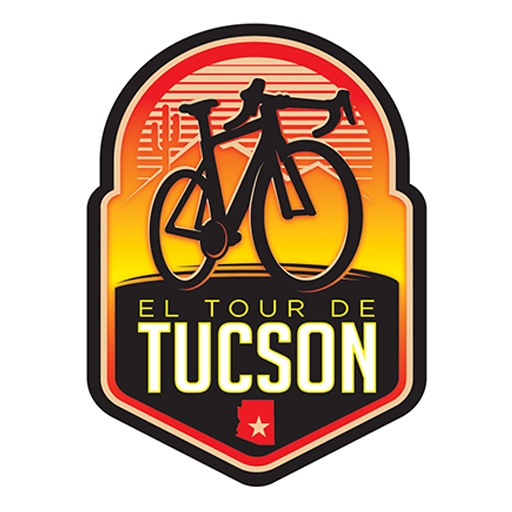Zenni Optical, the online eyewear brand known for its stylish and affordable prescription and sport…
Excited to have Catalina Council Boy Scouts of America participate in 2022 El Tour
We continue to get some great non-profit partners as part of the El Tour team for the upcoming Banner – University Medicine 39th El Tour de Tucson. A new partnership comes from Catalina Council Boy Scouts of America.
They will be among the more than 40 non-profit organizations riding to raise money for their cause.

“Our mission is to deliver fun and exciting experiences, through strong scouting units, which build better young people through outdoor adventures that develop character,” Catalina Council Boy Scouts of America says. “The event enables scouts to earn credit to the cycling merit badge, actively participate in a large community event and raise funds for the Catalina council.”
Because of their long-standing dedication to success, we are sure they will have great success in El Tour – not only through fundraising but on the course as well.
Their goal is $5,000 as well as many cyclists.
They also have an added incentive – that aforementioned cycling merit badge. To help, Catalina Council Boy Scouts of America visit https://www.pledgereg.com/catalina-council-boy-scouts-of-america.
Below are the requirements for Boy Scouts for a cycling merit badge requirement:
1a. Explain to your counselor the most likely hazards you may encounter while participating in cycling activities and what you should do to anticipate, help prevent, mitigate, and respond to these hazards.
1b. Show that you know first aid for injuries or illnesses that could occur while cycling, including cuts, scratches, blisters, sunburn, heat exhaustion, heatstroke, hypothermia, dehydration, insect stings, tick bites, and snakebite. Explain to your counselor why you should be able to identify the poisonous plants and poisonous animals that are found in your area.
1c. Explain the importance of wearing a properly sized and fitted helmet while cycling, and of wearing the right clothing for the weather. Know the BSA Bike Safety Guidelines.
- Clean and adjust a bicycle. Prepare it for inspection using a bicycle safety checklist. Be sure the bicycle meets local laws.
- Show your bicycle to your counselor for inspection. Point out the adjustments or repairs you have made. Do the following:
3a. Show all points that need oiling regularly.
3b. Show points that should be checked regularly to make sure the bicycle is safe to ride.
3c. Show how to adjust brakes, seat level and height, and steering tube. - Describe how to brake safely with foot brakes and with hand brakes.
- Show how to repair a flat by removing the tire, replacing or patching the tube, and remounting the tire.
- Describe your state’s traffic laws for bicycles. Compare them with motor-vehicle laws. Know the bicycle-safety guidelines.
- Using the BSA buddy system, complete all of the requirements for ONE of the following options: road biking OR mountain biking.
- Option 1: Road Biking
- Take a road test with your counselor and demonstrate the following:
7a I. Properly mount, pedal, and brake, including emergency stops.
7a II. On an urban street with light traffic, properly execute a left turn from the center of the street; also demonstrate an alternate left-turn technique used during periods of heavy traffic.
7a III. Properly execute a right turn.
7a IV. Demonstrate appropriate actions at a right-turn-only lane when you are continuing straight.
7a V. Show proper curbside and road-edge riding. Show how to ride safely along a row of parked cars.
7a VI. Cross railroad tracks properly. - 7b. Avoiding main highways, take two rides of 10 miles each, two rides of 15 miles each, and two rides of 25 miles each. You must make a report of the rides taken. List dates for the routes traveled, and interesting things seen.
- 7c. After completing requirement b for the road biking option, do ONE of the following:
7c Option 1. Lay out on a road map a 50-mile trip. Stay away from main highways. Using your map, make this ride in eight hours.
7c option 2. Participate in an organized bike tour of at least 50 miles. Make this ride in eight hours. Afterward, use the tour’s cue sheet to make a map of the ride. - Option 2: Mountain Biking
- Take a trail ride with your counselor and demonstrate the following:
7a I. Properly mount, pedal, and brake, including emergency stops.
7a II. Show shifting skills as applicable to climbs and obstacles.
7a III. Show proper trail etiquette to hikers and other cyclists, including when to yield the right-of-way.
7a IV. Show proper technique for riding up and down hills.
7a V. Demonstrate how to correctly cross an obstacle by either going over the obstacle on your bike or dismounting your bike and crossing over or around the obstacle.
7a VI. Cross rocks, gravel, and roots properly. - 7b. Describe the rules of trail riding, including how to know when a trail is unsuitable for riding.
- 7c. On trails approved by your counselor, take two rides of 2 miles each, two rides of 5 miles each, and two rides of 8 miles each. You must make a report of the rides taken. List dates for the routes traveled, and interesting things seen.
- 7d. After fulfilling the previous requirement, lay out on a trail map a 22-mile trip. You may include multiple trail systems, if needed. Stay away from main highways. Using your map, make this ride in six hours.
